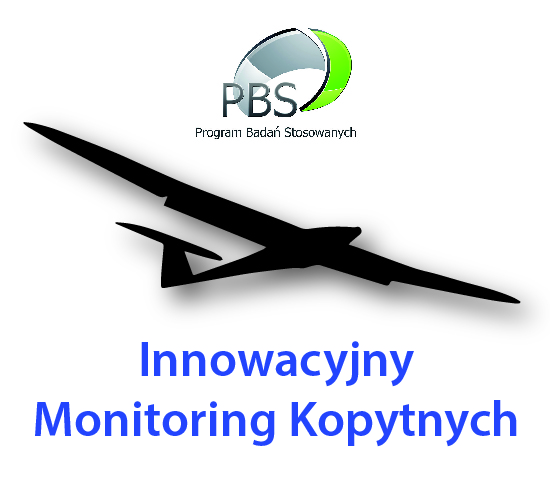Kok O. B., Kok A. C., Van Ee C. A. 2000. Diet of the migrant Lesser Kestrel Falco naumanni in their winter quarters in South Africa, as determined by stomach content analysis. Acta orn. 35: 147-151. | | Department of Zoology and Entomology, University of the Orange Free State, P.O. Box 339, Bloemfontein 9300, SOUTH AFRICA Abstract. Analysis of stomach contents from 386 Lesser Kestrels Falco naumanni obtained at Bloemfontein, South Africa, during the austral summer over a 12 year period (1984-1996) showed this species to be predominantly insectivorous. Isoptera (Harvester Termite Hodotermes mossambicus), followed by Solifugae and Chilopoda, formed the staple food. Lesser Kestrels consumed large quantities of small-sized prey, mainly Isoptera, early in the austral summer, while larger-sized food items, mostly Acrididae, dominated at the end of the non-breeding season. Results from pit trap sampling suggest that Lesser Kestrels are opportunistic foragers utilising the most abundant prey species. Key words: Lesser Kestrel Falco naumanni, diet, winter quarters, South Africa | |
Barkowska M.1, Pinowska B.1, Pinowski J.1, Romanowski J.1, Hahm K.-H.2 2000. Evaluation of the TOBEC method for calculating fat mass in Tree Sparrows Passer montanus and House Sparrows Passer domesticus. Acta orn. 35: 135-145. | | 1 Dept. of Vertebrate Ecology, Institute of Ecology, Polish Academy of Science, Dziekanów Leony, 05-092 Lomianki, POLAND, e-mail: This email address is being protected from spambots. You need JavaScript enabled to view it., This email address is being protected from spambots. You need JavaScript enabled to view it.. 2 Environmental Research Institute, Kyungnam University, 449 Wolyoung-Dong, Masan 630-701, REPUBLIC OF KOREA Abstract. Total body electrical conductivity (TOBEC) is the name of a non-invasive method for investigating total body fat (TBF) in vertebrates. The error of measurement depends on body mass (for large animals relative error is small), body shape and other factors. The ACAN-2 apparatus operating on the basis of the TOBEC method shows integer numbers (readings) correlated with lean body mass (LBM). From the series of these readings (measurement) TOBEC can be calculated in many ways. Error for LBM and TBF measure in Tree Sparrows (of masses 22.5 ą 1.7 g) and House Sparrows (of masses 29.8 ą 2.0 g) was equal to 1.19 g. This error may be reduced by repeating the TOBEC measurement and calculating the arithmetic mean of readings from the apparatus obtained 1 second after the commencement of measurement. Readings making up a single measurement series showed periodic irregular fluctuations of average amplitude 3 units in the case of Tree Sparrows and 5 units for House Sparrows - corresponding to errors of 0.5 g LBM in both species. Given individuals of both species were characterised by similar differences between first and second TOBEC measurements. The TOBEC value obtained in a measurement during which a bird defecated in the chamber of the apparatus was significantly higher than that for a bird in a clean chamber. The orientation of the head in the chamber did not influence the repeatability of the TOBEC measurement. In Tree Sparrows, the relationship between TOBEC and LBM differed between those captured and held for one night prior to measurement and those measured for TOBEC immediately after capture. Key words: body fat, Tree Sparrow, Passer montanus, House Sparrow, Passer domesticus, TOBEC
| |
Kruszewicz A.1, Dyrcz A.2 2000. Intestinal parasites in five bird species of the genus Acrocephalus. Acta orn. 35: 153-158. | | 1 Warsaw Zoological Garden, Ratuszowa 1/3, 03-461 Warszawa, POLAND, e-mail: This email address is being protected from spambots. You need JavaScript enabled to view it. 2 Department of Avian Ecology, Wrocław University, ul. Sienkiewicza 21, 50-335 Wrocław, POLAND, e-mail: This email address is being protected from spambots. You need JavaScript enabled to view it. Abstract. We studied the occurrence of intestinal parasites in adults and nestlings of Acrocephalus paludicola, A. schoenobaenus, A. palustris, A. scirpaceus and A. arundinaceus. In all studied species the most common taxa were Coccidia and Ascaridia, and in some species also Ornithostrongylus and other Nematoda. In A. arundinaceus parasitized males were significantly heavier than nonparasitized ones, whereas in females the opposite was found. Also parasite-free male A. schoenobaenus and A. scirpaceus and female A. paludicola tended to be lighter compared to parasitized ones, but the difference was not significant. Infected A. scirpaceus females had significantly larger fat deposit that noninfected ones. Parasite prevalence varied also significantly between the promiscuous A. paludicola and the related monogamous species. Key words: genus Acrocephalus, intestinal parasites, mating systems, body weight, fat deposit
| |
Migula P., Augustyniak M., Szymczyk A., Kowalczyk K. 2000. Heavy metals, resting metabolism rates and breeding parameters in two populations of Black-headed Gull Larus ridibundus from industrially polluted areas (Upper Silesia, Poland). Acta orn. 35: 159-172. | | Department of Human & Animal Physiology, University of Silesia, Bankowa 9, 40-007 Katowice, POLAND, e-mail: This email address is being protected from spambots. You need JavaScript enabled to view it. Abstract. Black-headed Gulls breeding in the central part of the Upper Silesian Industrial Region (Katowice-Szopienice) in Southern Poland were compared with the colony from the less polluted area (Świerklaniec) situated in a distance of 23 km. Heavy metals: Cd, Pb, Zn and Cu were determined in various organs of nestlings, fledglings and mature birds as well as egg yolks. Resting metabolism rates, hatching success and eggshell thickness were used as biomarkers of environmental exposure to industrial pollutants. The clutch size (2.97 versus 3.61) and hatching success (81.5% versus 87%) were lower in the colony from the more polluted site. Relatively high metal contents in yolks indicate only a partial protection of the offspring from toxic compounds. Gulls were able to regulate body contents of essential metals Zn and Cu, but Pb and Cd accumulated rapidly in the liver, kidneys, and lungs of developing birds. Cd also accumulated in the ovaries at the similar levels as in the kidneys. Cd and Pb may have affected earlier stages of development when parents were foraged in a close vicinity of heavily polluted area and once the young gulls had reached a maturity they then foraged in distant areas. During this period they were exposed to pollutants in a similar way as the gulls from a less polluted site. There was no growth impairment identified in gulls from the more polluted area, and their resting metabolism (RMR) calculated per unit of body weight was lower, indicating that energetic costs for detoxification were not as high. Key words: Black-headed Gull, Larus ridibundus, heavy metals, hatching success, resting metabolism, industrial pollution | |
Nowakowski J. J. 2000. Long-term variability of wing length in a population of the Reed Warbler Acrocephalus scirpaceus. Acta orn. 35: 173-182. | | Department of Ecology and Environmental Protection, Warmia & Masuria University, 10-561 Olsztyn, Żołnierska 14, POLAND, e-mail: This email address is being protected from spambots. You need JavaScript enabled to view it. Abstract. 4166 measurements of the wing length of Reed Warblers were collected during 9 breeding and pre-migratory periods in Central Poland. In the studied population significant differentiation in the wing length among seasons was shown in adult and juvenile birds. Multiple regression and path analysis showed that weather factors (temperature and precipitation) during breeding period determine the long-term variation in the wing length in both adult and young birds. Changes in wing length were explained by natural selection and habitat selection. In breeding and pre-migratory periods, temperature and precipitation influence changes in food availability, and thus affect optimisation of energetic expenses on feeding. It was revealed that long-winged individuals are best adapted to cold and rainy conditions, while the short-winged ones - to warm and dry summers. Weather conditions in the period of birds arrival to the breeding grounds may be connected with differentiation in availability of optimal places for establishing territories. In that way they influence intraspecific competition for breeding territories and the effectiveness of their occupation by morphometrically different birds. Key words: Reed Warbler, Acrocephalus scirpaceus, wing length, biometric variability, natural selection | |
Panek M., Kamieniarz R. 2000. Habitat use by the Partridge Perdix perdix during the breeding season in the diversified agricultural landscape of western Poland. Acta orn. 35: 183-189. | | Polish Hunting Association, Research Station, Sokolnicza 12, 64-020 Czempiń, POLAND, e-mail: This email address is being protected from spambots. You need JavaScript enabled to view it.. Abstract. The study was carried out in 1994-96 in an area of western Poland where field sizes range widely - from <1 to 50 ha. The spring population density of Partridges was estimated by call counts on 1 km2 study plots. The landscape structure was described by the proportion of crops and orchards, the number of arable fields and the length of permanent cover with spontaneous vegetation. Radio-tagged individuals (24 pairs and 6 single males) were tracked during the breeding season. The Partridge density in the study plots ranged from 0 to 7.7 pairs per km2, and increased with the number of fields per km2 and the proportion of small orchards among the arable fields. Radio-tagged pairs on small fields (<10 ha) preferred field edges with permanent treeless plant cover and edges without permanent plant cover. On large fields (>10 ha), a preference was shown for field edges with both wooded and treeless permanent plant cover. Partridges avoided the centres of both types of fields. Preferred nesting sites were in permanent plant cover and orchards; crops were used less frequently than expected. The spring carrying capacity of the field habitat for Partridges was dependent on the availability of field edges, including those devoid of permanent plant cover. Key words: Partridge, Perdix perdix, habitat use, nesting, habitat heterogeneity, agricultural landscape | |
Soave G.1, Coria N.2, Silva P.3, Montalti D.2, Favero M.3 2000. Diet of Cape Petrel Daption capense chicks at South Shetland Islands, Antarctica. Acta orn. 35: 191-195. | | 1 Scientific Department of Vertebrate Zoology, University of La Plata, Paseo del Bosque s/n, 1900 La Plata, ARGENTINA, e-mail: This email address is being protected from spambots. You need JavaScript enabled to view it. 2 Department of Biology, Argentine Antarctic Institute, Cerrito 1248, 1010 Buenos Aires, ARGENTINA 3 Department of Biology, University of Mar del Plata, Funes 3350, 7600 Mar del Plata, ARGENTINA Abstract. The diet of the Cape Petrel was investigated in two localities of South Shetland Islands, Antarctica, over the period January-February 1996. Stomach contents of adults obtained by flushing and regurgitates of chicks were sampled during the chick-rearing period. During the whole sampling period, euphausiids represented the predominant prey in terms of frequency of occurrence, mass and number at Fildes Peninsula, while at Harmony Point, euphausiids and fish components were found in similar proportions in terms of mass and frequency. Myctophiids fish, in particular Electrona antarctica, formed the bulk of the fish component. The analysis of the diet throughout the breeding season showed significant differences in number and mass of the prey items at Fildes Peninsula, while at Harmony Point, there were significant differences also in the occurrence of preys. Considering both localities, although the occurrence of the prey did not vary significantly during the brooding period, there were significant differences in their number and mass. Similar results were found in the post-brooding period between both localities. Key words: Cape Petrel, Daption capense, diet, South Shetland Islands, Antarctica
| |
Sorace A.1,2, Gustin M.2.3, Calvario E.2, Ianniello L.2, Sarrocco S.2, Carere C.2,4 2000. Assessing bird communities by point counts: repeated sessions and their duration. Acta orn. 35: 197-202. | | 1 Section of Behavioural Pathophysiology, Laboratorio di Fisiopatologia di Organo e di Sistema, Instituto Superiore di Sanita, Viale Regina Elena 299, 00161 Rome, ITALY, e-mail: This email address is being protected from spambots. You need JavaScript enabled to view it. 2 Stazione Romana Osservazione Protezione Uccelli, Oasi WWF "Bosco di Palo", Via di Palo laziale 2, 00055 Ladispoli (Rome), ITALY 3 Lega Italiana Protezione Uccelli, via Trento 49, 43100 Parma, ITALY 4 Department of Behavioural Biology, University of Groningen, P.O. Box 14, 9750 AA Haren, THE NETHERLANDS Abstract. The aim of this study was to provide optimal methodological criteria for the quantitative and qualitative estimates of bird communities inhabiting woodland areas using point counts. Compared were results obtained from counts carried out once or twice during the same breeding season and the optimal duration of each session was assessed. Data obtained from a total of 46 point counts, performed in three different woodland areas, each lasting 20 min. and repeated twice in the breeding season were analyzed in 5-min. blocks. It was concluded that 10-min. sessions repeated twice in a breeding season can provide a good description of the passerine bird community. However, some rarer species of the breeding community under study, including some diurnal raptors, woodpeckers, and scarce passerines, could be underestimated with this duration. Key words: bird census, point count duration, breeding season
| |
Kopij G. 2000. Diet of swifts (Apodidae) and swallows (Hirundinidae) during the breeding season in South African grassland. Acta orn. 35: 203-206. | | Department of Biology, National University of Lesotho, P. O. Roma 180, LESOTHO, e-mail: This email address is being protected from spambots. You need JavaScript enabled to view it. Abstract. Contents of 30 stomachs of 3 swift species, and 97 stomachs of 9 swallow species have been analyzed. Most birds were shot during the breeding season in semi-arid grasslands of South Africa. Swifts fed mainly on termite alates and minute nemathoceran Diptera, while swallows preyed mainly upon minute Coleoptera. Both in the diet of swifts and swallows flying ants constituted an important food. Key words: swifts, Apodidae, swallows, Hirundidae, diet, grassland, South Africa | |
Kopij G.1, De Swardt D. H.2, Nuttall R. N.2 2000. Diet of some coraciiform species (Coraciiformes) in South Africa. Acta orn. 35: 207-209. | | 1 Department of Biology, National University of Lesotho, PO. Roma 180, LESOTHO, e-mail: This email address is being protected from spambots. You need JavaScript enabled to view it. 2 Department of Ornithology, National Museum, Bloemfontein 9300, REPUBLIC OF SOUTH AFRICA Abstract. A total of 62 stomach contents of four Merops and three other coraciiform species, from South Africa, were analysed. Hymenoptera constituted the bulk of the diet of all four Merops species examined, with Odonata and Coleoptera being supplementary components. Upupa epops and Phoeniculus cyanomelas fed mainly on insect larvae, while Coracias caudata preyed upon Scarabaeidae, Acrididae, Isoptera and Solifugae. Key words: Coraciiformes, diet, South Africa
| |
Lesiński G. 2000. Location of bird nests in vertical metal pipes in suburban built-up area of Warsaw. Acta orn. 35: 211-214. | | Department of Vertebrate Ecology, Institute of Ecology, Dziekanów Leony, 05-092 Łomianki, POLAND, e-mail: This email address is being protected from spambots. You need JavaScript enabled to view it. Abstract. Five bird species (Great, Blue and Coastal Tits, Redstart, Tree Sparrow) nested inside vertical metal pipes of fences in Warsaw suburbs (central Poland). It appeared to be the main breeding site for a Great Tit - nearly 80% of the nests of the local population. The preferred diameter of the pipes depended on the size of the species (mainly on the length of tarsus). It was the highest in Great Tit and the lowest in Blue Tit. Great Tit built its nests significantly deeper (up to 1.7 m from the upper edge) than the remaining species. The mean number of fully feathered nestling per nest with success was lower in pipes than in nest boxes. Such a nest location is a local adaptation of birds living in highly urbanised area, where natural cavity breeding sites are scarce. Key words: urban birds, nest location, hole nesters, Great Tit, Parus major | |
Olech B.1, Pruszyński M.2 2000. Food caching or surplus killing in the Common Buzzard Buteo buteo? Acta orn. 35: 215-216. | | 1 Kampinoski National Park, Tetmajera 38, 05-080 Izabelin, POLAND 2 Field Station, Institute of Ecology Polish Academy of Science, 05-092 Łomianki, POLAND Abstract. In some Buzzard nests with nestlings, located in the Kampinos National Park, surplus food was found - two or more items of small rodents, mainly voles, without traces of damage, stored in nests. A part of the stored prey was in different stages of decay. Surplus prey items were more frequent in farmland nests than in forest nests. Key words: Common Buzzard, Buteo buteo, food caching, surplus killing
| |
Rejt Ł.1, Turlejski K.2, Bronche K., Topczewski A. M. 2000. Can food caching increase frequency of chicks' feeding in urban Kestrels Falco tinnunculus? Acta orn. 35: 217-221. | | 1 Institute of Zoology, Polish Academy of Science, Wilcza 64, 00-679 Warsaw, POLAND, e-mail: This email address is being protected from spambots. You need JavaScript enabled to view it. 2 Institute of Experimental Biology, Polish Academy of Science, Pasteura 3, 02-093 Warsaw, POLAND, e-mail:This email address is being protected from spambots. You need JavaScript enabled to view it. Abstract. Continuous video camera observations of the Kestrel's nest situated on a building within the city centre showed presence of a surplus prey (mainly untouched sparrows and voles) stored in the nest and its close vicinity. During the first three weeks of the nestling period, chicks were fed this prey, and the frequency of feedings was higher than the frequency of prey delivery. Food storaging was also observed in some other nesting places of Warsaw Kestrels. Daily pattern of prey deliveries observed in Warsaw did not differ significantly from the available data on Kestrels inhabiting an open landscape. Key words: Kestrel, Falco tinnunculus, urban area, food caching, feeding frequency
| |
|
 Unia Europejska
Unia Europejska







